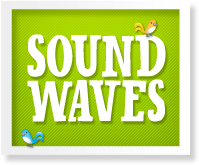Literacy
Writing
Writing is explicitly taught every day through a program called VOICES, which are identified as evidence based writing traits that students learn in order to become highly effective writers.
- Voice—the personal tone and flavor of the author's message
- Organisation—the internal structure of the piece
- Ideas—the main messages
- Conventions—the mechanical correctness
- Excellent Word Choice—the vocabulary a writer chooses to convey meaning
- Sentence Fluency—the rhythm and flow of the language
- Show and Share: Presentation—how the writing actually looks on the page
Reading
Reading is explicitly taught every day through a program called FAME (Fluency, Accuracy, Making Meaning and Exploring Vocabulary) which incorporates all strategies and skills that need to be taught in order for the students to become balanced and highly effective readers.
Parent Reading Support
We strongly encourage and support our parents to maintain a regular home reading routine with their children. Below is a link to ‘how to support your child with their reading’.

Speaking and Listening
Oral language underpins all areas of Literacy and is a huge aspect of our teaching philosophy at Hartwell. Language is a developmental process; a child learns to speak, then they learn to read and finally, they learn to write. Throughout every learning community at Hartwell, our students are taught a range of differentiated speaking and listening skills throughout all areas of the curriculum. An example of this is our ‘Turn and Talk’ oral language strategy where the students are buddied up with a Talking Buddy and follow our Speaking and Listening Protocol posters and our HELPS acronym posters.
Spelling
Spelling is intertwined throughout our Literacy programs so that direct links and connections can be made for the students. Our spelling and grammar programmes are differentiated to meet the needs of individual students across each year level.

Prep and Year 1 - Jolly Phonics Spelling Program
Jolly Phonics is a multi-sensory phonics program which makes learning to read and write achievable for all children. Jolly Phonics incorporates actions, jingles and stories for each of the 42 sounds which makes learning fun for both the child and teacher.
Years 2-6 - Sound Waves Spelling Program

The Sound Waves phonics approach focuses on the process of synthesizing (i.e. taking small parts and putting them together to form a whole). It uses a sound-to-letter strategy which acknowledges that sounds can be represented more than one way in written form. This approach focuses first on phonemes – the basic units of sound. It then explores the letters that represent these sounds and how they can be put together to form written words (graphemes).
Watch the Sound Waves video to find out more…